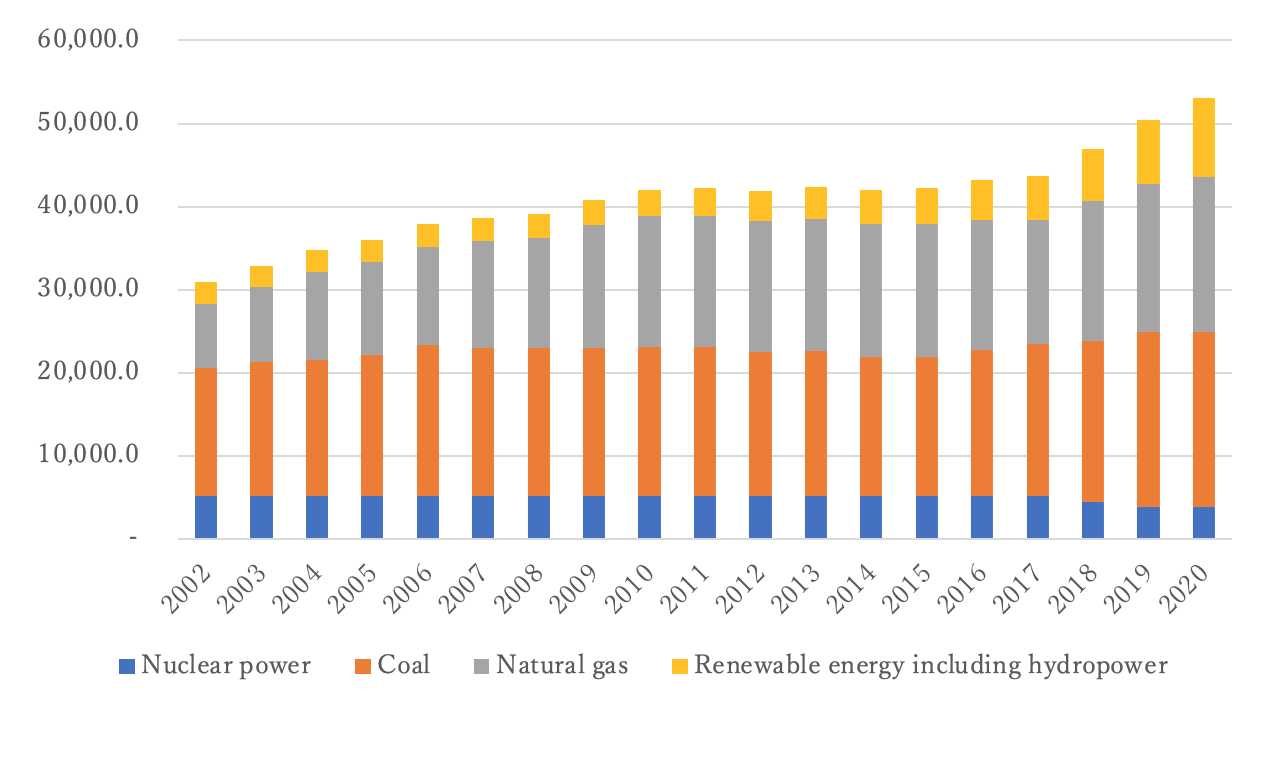One of the prerequisites for limiting the global temperature rise to within 1.5 degrees Celsius is to achieve “carbon neutrality,” that is, to reduce anthropogenic emissions of carbon dioxide, the greenhouse gas (GHG) with the greatest impact on global warming, to virtually zero by around 2050. Achieving 1.5 degrees Celsius was also a major point of contention at the 26th Conference of the Parties (COP26) to the United Nations Framework Convention on Climate Change (UNFCCC), which concluded in mid-November.
Taiwan, which is not a member of the UNFCCC, is also working to reduce emissions as part of its efforts to combat climate change. Since the change of government in 2016, the current Tsai Ing-wen administration has been promoting a “sustainable energy policy” that encompasses energy conservation, technological innovation in power generation and storage, and other measures, centered on an energy transition that aims to eliminate nuclear power (“non-nuclear home” = a homeland without nuclear power) and expand renewable energy.
The main pillar of this policy is the so-called energy transition, which is to decrease the coal-fired electrical power plant capacity from about 35.5% in 2016 to 30% in 2025, and nuclear power plant capacity from about 10.4% to 0%, while increasing the share of natural gas from about 31.6% to 50% and renewable energy from about 9.5% to 20% to compensate for the reduced power supply.
The GHG emission reduction target for Taiwan as a whole through this energy transition is set at a 50% reduction in 2050 compared to the 2005 level. The development process until 2020 shows that the nuclear power plant capacity has indeed decreased to about 6.7%, while renewable energy and natural gas have increased to about 16.4% and 32.4%, respectively. At the same time, however, coal-fired power generation capacity has increased to 36.4% in line with the increase in electricity demand (Figure 1). The government’s goal of “50% reduction by 2050 (compared to 2005)” is now facing a new challenge.
Figure 1: Taiwan’s power generation capacity in recent years (nuclear power, coal-fired power, natural gas, and renewable energy including hydropower / Unit: kilo watt)

Source: Prepared by the author based on data from the Bureau of Energy, Ministry of Economic Affairs, Taiwan.
Carbon neutral declarations have been made worldwide as a necessary measure to halt the escalating climate change. In this context, Taiwan’s current reduction targets may be perceived as passive from an international perspective. In October 2021, a draft law was proposed to amend the current law on the reduction and control of greenhouse gases into a law on coping with climate change (Climate Change Response Act), which will include carbon neutrality by 2050 and the introduction of a carbon tax. This draft includes the introduction of a carbon tax, which is expected to be the subject of active debate, as many companies are concerned about possible cost increase.
In addition to carbon neutrality, the Carbon Border Adjustment Mechanism (CBAM), a new regulatory proposal released by the European Commission in July 2021, is currently attracting attention from industry and the rest of the world. CBAM, also known as the “carbon border tax,” is a measure that imposes a carbon price equivalent to that of the EU in the form of tariffs or other taxes on the amount of carbon emitted during the production process, in order to prevent “carbon leakage” (see Note) when businesses in the EU import relevant products from outside the EU. Taiwanese industry, which is deeply involved in the global supply chain, is not extraneous to these regulations, and we will discuss its response in a later series article.
Note: When the degree of regulation of greenhouse gas emissions differs from country to country, there will be a difference in international competitiveness between industries in countries with strict regulations and those in countries with less stringent regulations. As a result, production and investment in countries with strict regulations will shrink, resulting in a decrease in emissions, while production and investment in countries with less stringent regulations will expand, resulting in an increase in emissions. This is called carbon leakage.
—
Text: CHENG Fang-Ting (Institute of Developing Economies)


